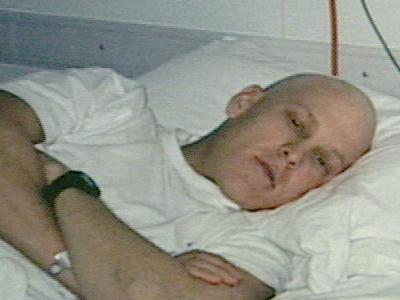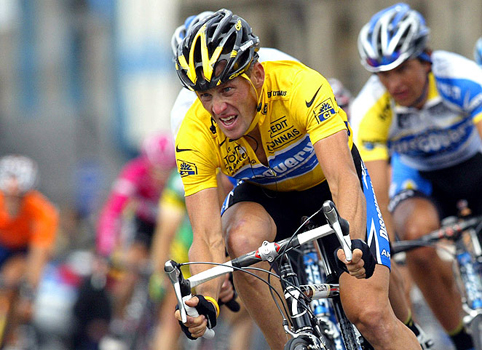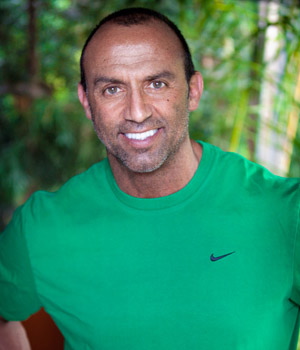With the recent news that Lance Armstrong has elected to no longer contest the accusations that he used performance enhancing drugs (PEDs), and the subsequent “stripping” of his Tour De France titles, news headlines everywhere are labeling Armstrong as a “cheat”, and asking if the goodness of the fundraising efforts of his Foundation should be negated. This is nonsense. The USADA’s intentions might appear noble, but it’s evaluation of athletes and its resolution methods are unfair and unreasonable.
It conducts drug testing throughout the year, as well as immediately before the event – that much is fine. Athletes are required to be available for random drug testing, anytime / anywhere, long before the time of the event. Fair enough. Although testing does not always identify those who have taken some form of PEDs, the USADA’s effort to detect drugs in athletes by way of random blood and urine testing is noble and legitimate. The goal of providing a guaranteed drug-free competitive arena is justifiable – even though it’s completely unrealistic at this point in time.
The first problem stems from the fact that the USADA is unable to stay ahead of the drug makers. It can only test for the “markers” of drugs which have already been identified. A drug is undetectable until it’s identified.
Not An Even Playing Field
The USADA cannot guarantee that ALL of the competitors are “clean”, in any given event. In fact, it can’t even guarantee that most of the competitors in a given event are not taking some form of PED. Without that sort of guarantee, athletes know that they will most certainly be competing against other athletes who will be taking undetectable drugs.
Therefore, athletes must make a decision. “Do I invest all the time, effort, sacrifice and money, in preparing for an event – without taking PEDs – knowing that the USADA cannot provide a guarantee that my opponents will also be clean?” In the absence of that guarantee, and with a burning desire to be a part of the race, athletes feel compelled to take PEDs, or else risk being blown away by their competitors. After all, who would spend an entire year in hard training, make the necessary sacrifices, and invest thousands of dollars, knowing that without taking PEDS, they don’t stand a chance of winning against others who will certainly be taking them?
How much of a difference do PEDS make? Well, logic would dictate that it’s quite a bit. If it were only a small difference, why would one take the chance of getting caught? If it only shaved off a minute or two (in the Tour de France, for example), a better strategy would be to train without PEDs. In actuality, they probably improve one’s time by tens of minutes. Yet, the difference between first place, second place, third place, etc. – is often a matter of seconds. What does this mean? It means that it’s likely that the top 5, maybe the top 10 – perhaps as many as the top 100 – are all beating the test. So again, who would attempt to train for a world class event, with all the requisite effort and cost, if one could not even make it into the top 20 without them?
Athletes Are Not Informed of Their Qualification Before the Event
Since the top competitors are probably taking PEDs and simply beating the test, the USADA relies heavily on hearsay and rumor, which usually comes after the race. Sometimes months or years, after the fact.
In other words, AFTER an athlete has passed numerous blood and urine tests, and AFTER they have gone through the grueling agony of the race, they are forced to deal with the indignity of having a rival publicly accuse them (truthfully or not) of taking PEDs, and the USADA treats it as if it’s gospel. Hearings are then held, forcing an accused athlete to incur further humiliation and legal costs, and dismissing the legitimacy of the drug testing. If the results of drug testing can be so easily disregarded, why bother doing it at all? Why not simply rely on hearsay and rumor after the race?
The fair thing would be to inform the athlete BEFORE the grueling event, that he or she is not qualified – due to a positive blood or urine test. Or allow the athlete to compete, based on there being no evidence of PEDs at that point, with no further questions.
Unfair Method of Resolution
Here’s the third problem. If an athlete has been “caught” using PEDs (either by way of a positive blood test, or a so-called hearing), and their award is re-assigned to the next competitor, the likelihood is high that that person is also taking PEDs, and knew how to beat the test. Can the USADA guarantee that the re-assignment of the award is fair? No – of course not. In fact, the USADA can’t even guarantee that the person who came in 15th place is not using PEDs. It’s ironically unfair to bestow a “forfeited” award to someone who might be equally guilty, or who’s innocence is not certain.
Unreasonable Methods of Evaluation
The USADA is the bully in the playground. Or maybe the better analogy would be a vigilante. Although the USADA is authorized as the official agency to monitor drug abuse and impose sanctions (by way of international treaty), its methods of evaluation and penalization are much less than fair. It does what it wants, the way it wants to do it, regardless of the fact that similar methods would never be admissible in a court of law.
One example of this is the case of Marion Jones. She tested negative for PEDs in the 2000 Olympic Games (and won five medals), but then rumors lead investigators to BALCO, and the discovery of “the clear”. Once there, investigators found a list of “client names”, which included that of Marion Jones. So they pursued her without the benefit of a positive blood test result.
When they could not prove she had taken PEDs, they offered her a choice: confess to having taken PEDs, or face jail time for having lied under oath about whether she was aware of a check-fraud scheme in which the father of her son was involved. “Tell us what we want to hear about your doping, or else we’ll make you suffer another way”. Is that not the way of a bully? Is that not considered a “confession under duress”? Is that not coercion or black mail? Does it not seem like the primary goal of the USADA was to discredit and disgrace a person?
In a court of law, there are certain standards of fairness. For example, evidence must be obtained through proper means – otherwise it is considered “inadmissible”. Suspects have certain rights, among them the “right to remain silent”, “innocent until proven guilty” and a “statute of limitations”. The USADA appears to disregard those types of fairness standards.
A More Fair Protocol
A better approach would be for the USADA to conduct its normal testing procedures, throughout the year, as well as the day of the event, and consider those results “conclusive”. If it did not catch a user of PEDs by that time, it should let it go. Otherwise, it risks ruining the reputation of an athlete based on hearsay, AFTER the athlete has suffered the agony of the race, without proof that the next person in line to receive the award is drug-free, and without being able to offer the athlete a guarantee that he could compete against other drug-free athletes.
If the USADA discovers a drug in the urine or blood of an athlete after the event, it can add that information to its data base, which will allow it to do a better job next time it conducts its testing. This should be the concession for not being able to unequivocally provide the athlete with a guaranteed drug-free competition. Fairness should apply to both sides.
In terms of Lance Armstrong personally, what an amazing person he is – even IF he had taken PEDs! How many people survive simultaneous brain and testicular cancer? That alone is an act of heroism. But then he climbed to the top of the athletic world. Again, that alone would be admirable – knowing the likelihood that he had won against others who were taking PEDs. Then he formed a foundation that raised nearly half a billion dollars for cancer research and awareness. Yet again, that act alone would qualify an individual as a hero. Lance did all three.


This is not meant to suggest that the accusations against him should have been dismissed based on these three reasons. Rather, the accusations should have been dismissed for the reasons mentioned above. But if PEDs played even a small role in helping a human being beat cancer, become the inspiring figure-head of the cycling world, and then become a leader in the fight against cancer and a symbol of hope to millions of cancer patients – the world would be a better place if more people took PEDs.
Of course, PEDs don’t make a champion. They also don’t help someone survive cancer, nor become the leader of a foundation. Lance Armstrong did all that by way of his determination. What has the USADA done? Imposed unfair evaluation standards and penalties, bullied people for years after it was unable to provide a guaranteed drug-free playing field, and discouraged future athletes from participating in high level competition because they’re damned if they don’t take drugs, and they’re damned if they do.
Is the USADA really trying to improve sports? Or is it guilty of using unfair, “win-at-all-cost” tactics – similar to the ones it claims to be crusading against – with the ultimate goal of glorifying itself?
Here’s a link to a recent article in Forbes Magazine, which outlines in greater detail, the “outlaw” manner in which the USADA has handled the Lance Armstrong case.

Doug Brignole is also the co-author of “Million Dollar Muscle” (along with Adrian Tan, PhD) – a university textbook that is a sociological analysis of the sports and fitness industries.




















You must be logged in to post a comment Login